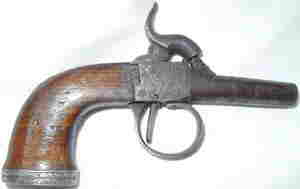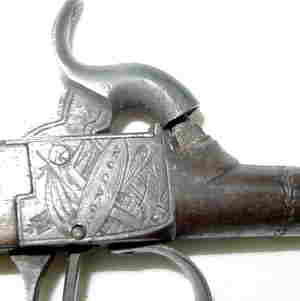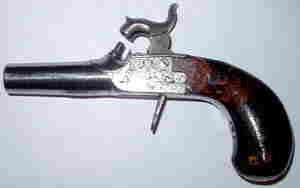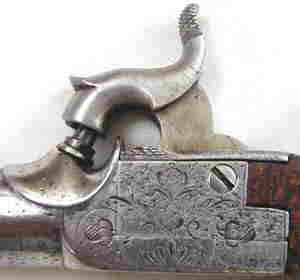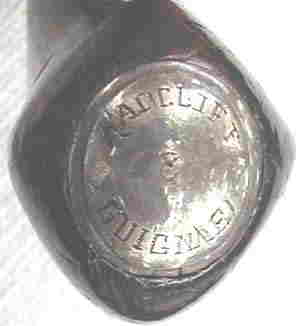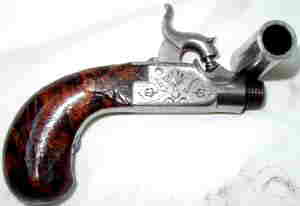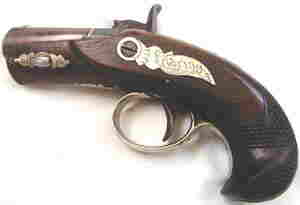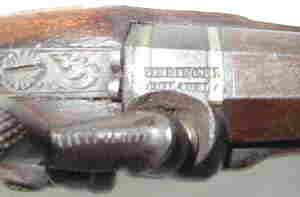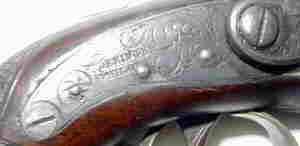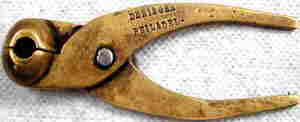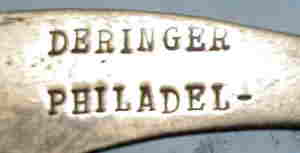|
|
|
|
|
|
|
Pictured above are (top to bottom): |
|
|
A small single shot percussion .30 caliber center hammer pistol made in Belgium with English proof marks. The name on the frame is "R. S. CLARK" (1841-1843). |
|
| The larger of the 3 pistols is apparently French made. It bears the names of "RADCLIFF(E) & GUIGNARD". It is a single shot .50 caliber center hammer pistol with a folding trigger. Radcliffe & Guignard is the firm of T. W. Radcliffe & J. Saunders Guignard of Columbia, South Carolina in 1859. In 1860, it was Thomas W. Radcliffe alone at the same address. They sold watches & jewelry. Albaugh in his book, Confederate Arms, lists Radcliffe as a importer & dealer in watches, guns & military goods at the NE corner of Richardson & Plain Streets. Just before the war, Radcliffe formed the Chicora Rifles, and as it's captain went to Charleston at the start of the war. He returned after the reorganization of his company and was placed in charge of the Lightwood Knot Spring training camp with the rank of Major. He had a brief association with William Glaze (Palmetto Armory) in establishing a large arsenal and armory but their plans never got beyond the paper stage. It is interesting to note the mis-spelling of his name on the pictured gun. Having the same name, I know the problem he must have had with people leaving the "e" off the end of his name. It happens dozens of times a year with me and so it did with him. | |
|
The bottom side hammer, .40 caliber pistol is, of course, the classic
American made Henry Deringer Pocket Pistol. These pistols were made
from the late 1830's to 1866. The name Deringer became famous enough
for all small single shot pistols, regardless of maker, to ultimately
be designated as Deringers or, as with Radcliffe above, mis-spelled
as "Derringer"
|
|
|
|
|
|
The R. S. Clark "Derringer" |
|
|
|
|
| This center hammer percussion pistol measures only 4¾" overall. The screw off barrel is a mere 1-1/8". At the frame this gun is only ½" wide. It bears the name "R. S. CLARK" on a slant within a panel on the left frame of the lock. On the right frame in a similar position is "LONDON". The "E" over "LG" over a star, within an oval on the left side of the barrel, under the nipple is a Belgium proof mark indicating the country of manufacture. R. S. Clark apparently purchased some of his stock from the continent. However, all guns imported into England for resale were, by law, also English proofed. The English crossed scepters Birmingham proof marks can be found on the bottom of the barrel. One is just forward of the frame and the other is on the screw off part of the barrel. One gun - two countries. | |
|
Note Belgium Proof Mark |
|
|
English Proofs
|
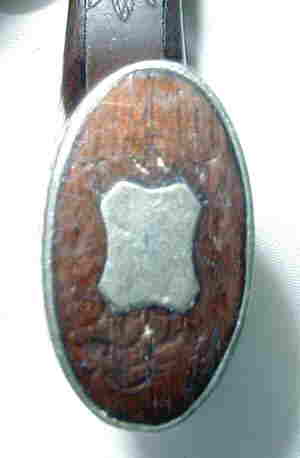
Bottom of
Butt
|
|
|
|
|
|
|
|
|
|
|
This center hammer, folding trigger percussion pistol measures 6-1/8" overall. The screw off barrel is 1¾". On the silver cap box cover at the bottom of the butt in an oval is "RADCLIFF(E) & GUIGNARD". The only other marking is the number "17" on the bottom of the barrel frame just to the rear of the screw off barrel. The wood butt is swirled French walnut.
|
|
|
|
|
|
|
|
|
|
|
|
|
|
|
The Deringer "Derringer"
|
|
|
|
|
| This small side hammer percussion pistol measures 5-1/8" overall. The one piece barrel is 2" long. The markings on top of the breech and on the scroll engraved lockplate is "DERINGER" over "PHILADELa". | |
|
|
|
|
Along with the gun when I purchased it was a brass bullet mould marked in two lines "DERINGER/PHILADEL -". Pictures of this rarity (or oddity) follow. |
|
|
|
|
|
|
|
|
|
|
| Well, that's all for this posting. I will be back in a week to ten days with another......and another. | |
|
Dave Radcliffe TIP OF THE WEEK: I. I. D. T. T. T. ("If In Doubt, Tell The Truth" - Mark Twain)
|
|

